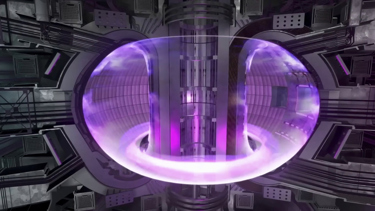Major Breakthrough In Nuclear Fusion Announced

By John Oncea, Editor

So, what’s it all mean?
According to, well, everyone, scientists at the National Ignition Facility at the Lawrence Livermore National Laboratory in California successfully produced a nuclear fusion reaction resulting in a net energy gain.
Check out the NIF’s video announcing fusion ignition was achieved.
The NIF release calls the achievement “a major scientific breakthrough decades in the making that will pave the way for advancements in national defense and the future of clean power.” The release goes on to describe the landmark moment as follows:
“On Dec. 5, a team at LLNL’s National Ignition Facility (NIF) conducted the first controlled fusion experiment in history to reach this milestone, also known as scientific energy breakeven, meaning it produced more energy from fusion than the laser energy used to drive it. This first-of-its-kind feat will provide unprecedented capability to support NNSA’s Stockpile Stewardship Program and will provide invaluable insights into the prospects of clean fusion energy, which would be a game changer for efforts to achieve President Biden’s goal of a net-zero carbon economy.”
“The pursuit of fusion ignition in the laboratory is one of the most significant scientific challenges ever tackled by humanity, and achieving it is a triumph of science, engineering, and most of all, people,” LLNL Director Dr. Kim Budil said. “Crossing this threshold is the vision that has driven 60 years of dedicated pursuit — a continual process of learning, building, expanding knowledge and capability, and then finding ways to overcome the new challenges that emerged. These are the problems that the U.S. national laboratories were created to solve."
But, What’s It All Mean?
The CNN article linked above explains we’ve got a long way to go powering the electric grid by nuclear fusion as the project only produced enough energy to boil about 2.5 gallons of water. “That may not seem like much, but the experiment is still hugely significant because scientists demonstrated that they can create more energy than they started with. While there are many more steps until this can be commercially viable, that is a major hurdle to cross with nuclear fusion.”
And the NPR article, also linked to above, quotes Tony Roulstone, a nuclear engineer at Cambridge University in the U.K., as saying unless there's an even larger breakthrough, fusion is unlikely to play a major role in power production before the 2060s or 2070s. “I think the science is great,” Roulstone says of the breakthrough. But many engineering obstacles remain. “We don't really know what the power plant would look like.”
Still, despite a potential 40- to 50-year wait, the nuclear fusion breakthrough could change the world in five ways beyond setting up the world with access to potentially limitless energy, according to Indy 100. These include the reduction of carbon emissions, a safer alternative to energy, the lessening of political conflict over natural resources, an endless supply of fuel, and the creation of opportunities for more advancements.
